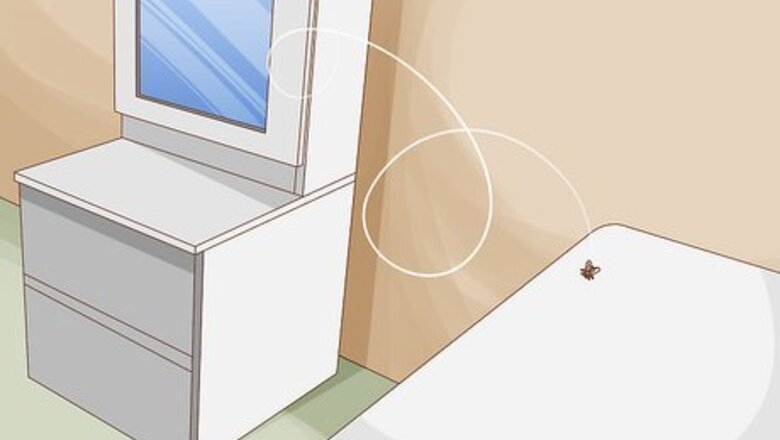
views
Using a Flyswatter
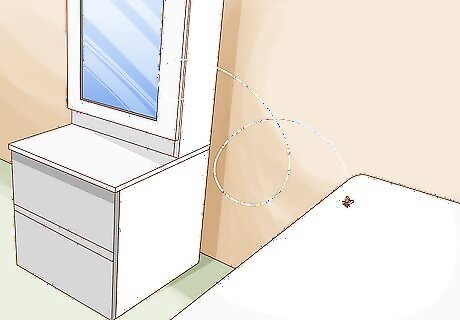
Wait for the fly to land. Keep your eye on the fly until it lands, then get ready to make your move. Approach the fly silently and slowly so it doesn't fly away. If you don’t have a flyswatter, you can use other objects with a flat surface, like a newspaper, shoe, or book.
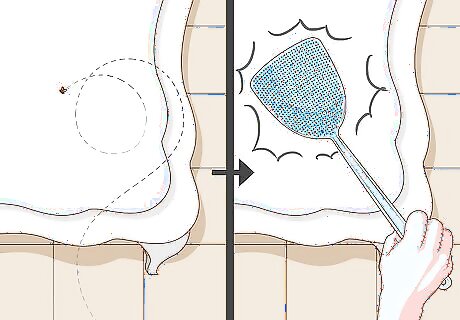
Swat the fly with a quick, downward motion. Raise your flyswatter above your head, and bring it down over the fly in a single, strong move. You are crushing the fly between your flyswatter and a hard surface. If you miss the fly the first time, wait for it to land and swat again.
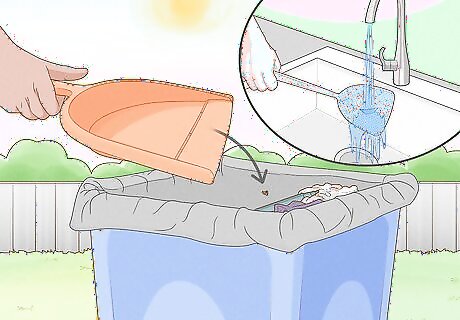
Wipe up the fly and clean off your flyswatter. Rinse the flyswatter in soap and water, and use a tissue or paper towel to wipe up the mess. Make sure to wash your hands! You can also disinfect with a cleaning solution to prevent spreading any germs.
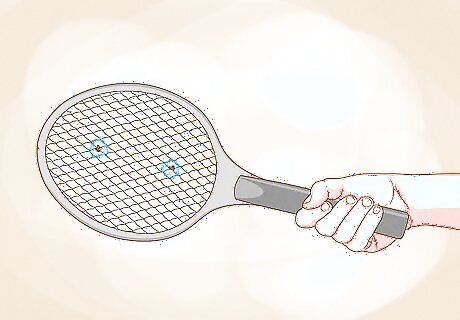
Try using an electric flyswatter for an easier, efficient option. Electric flyswatters are devices that lure in flies with a light and kill them upon contact. Stand near the fly with your electric flyswatter to kill it effortlessly and quickly. Be sure to read over instructions carefully before use. Avoid touching the racket area, and always let the flyswatter fully cool down before storing it.
Spraying the Fly
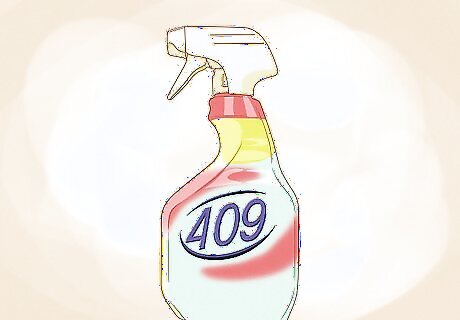
Choose from either chemical sprays, household cleaners, or hairspray. Chemical sprays kill flies instantly upon contact, though they contain harsh chemicals. You can also spray the flies with household cleaners, like Windex or Formula 409, or with an aerosol like hairspray. All of these sprays will help you kill a fly. Purchase chemical fly sprays at home supply stores. Look for brands like Hot Shot and Raid. Use spray if you want to remove many flies very quickly. Chemical sprays will kill them the fastest, though they have harmful chemicals. Household cleaners are a cheaper alternative, and you likely have them at home already.
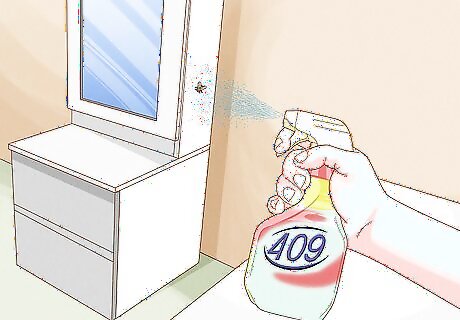
Spray the air near the fly thoroughly. Spray the fly while it is in the air or when the fly lands. Hold in the trigger to release the spray, and spray directly into the air around the fly. You want to saturate the fly in the spray. If you are using chemical sprays, the fly will die instantly. If you are using household cleaners or hairspray, the spray will coat the fly's wings, making it impossible to fly. The fly will still die, just not as quickly as with chemicals.
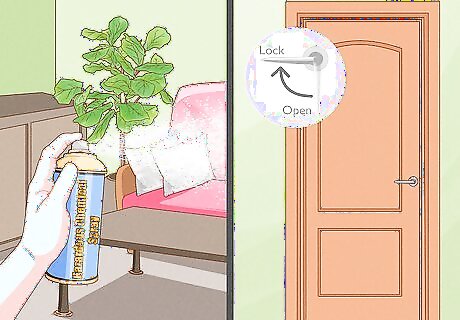
Leave the room after you spray any hazardous chemical. The chemicals contained in most fly sprays are toxic and lethal. Household cleaners also use chemicals, though not quite as toxic. Avoid inhaling these chemicals by leaving the room immediately after you spray. Leave the room for both chemical sprays and household cleaners. If you have pets or children, they should also avoid the room until the chemicals have settled. You can wait about an hour before reentering the room, so the chemicals can dissipate. This will depend on how ventilated your room is and how much chemical you spray. It is safe to come back into the room when you no longer smell the chemicals.
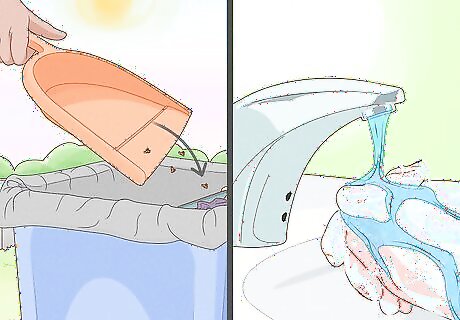
Dispose of the dead fly and wash your hands. Scoop up the dead flies with a paper towel or tissue, and throw them in the trash can. Make sure you wash your hands thoroughly with soap and water! If you killed multiple flies, throw them all away before you wash your hands.
Removing Flies with Traps
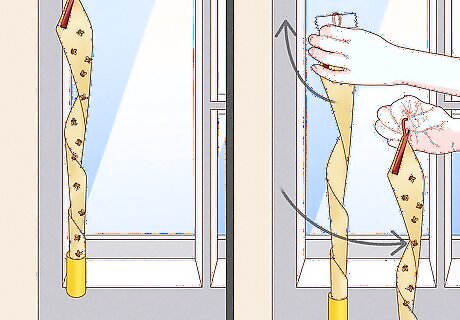
Hang fly paper in areas with many flies for a cheap and easy option. Fly papers, or fly ribbons, are strips of paper coated in a sticky attractant. Flies approach the paper because they are attracted to the smell, and they get stuck to the paper and die. You can hang fly paper near your entrances, above your windows, or next to your trash can, for example. Fly paper can be hung up indoors or outdoors. Replace your fly paper after you collect a handful of dead flies.
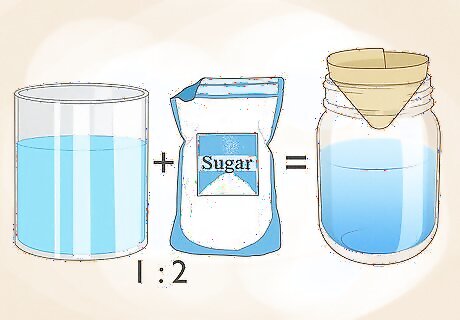
Make your own trap for a cost effective solution. You can make your own trap with sugar water, a jar, and a paper cone. Cut a small hole around the point of the paper cone. Pour 1 part sugar and 2 parts water into the jar, and place the cone upside down inside the jar. The flies will be attracted to the sweet smell, and once they are inside, they will get stuck and drown in the liquid. You can add a piece of cut fruit to the jar to tempt the flies further. Try a piece of apple or banana for fruit flies, raw potato for fungus gnats, and anything stinky for house flies. You can also add a mix of sugar and water to a plastic bottle instead of a jar.
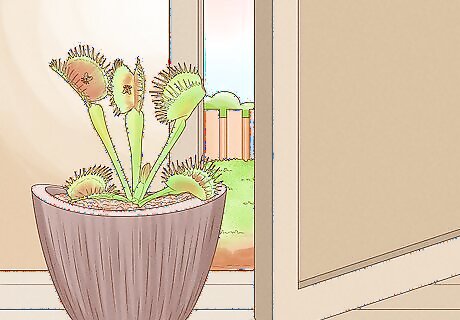
Set out a Venus flytrap for a natural, hands-off option. Venus flytraps are carnivorous plants that feed on insects. The flytrap has a reddish, sweet-smelling interior, which insects mistake as a flower. A fly will land inside, and the flytrap will snap shut. The fly cannot escape, and the flytrap will consume the fly. Place your flytrap in popular fly areas, like your kitchen or near your door. Purchase Venus flytraps at most home supply stores or garden centers.



















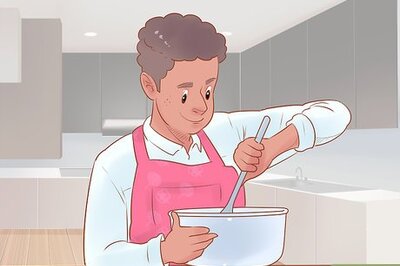
Comments
0 comment